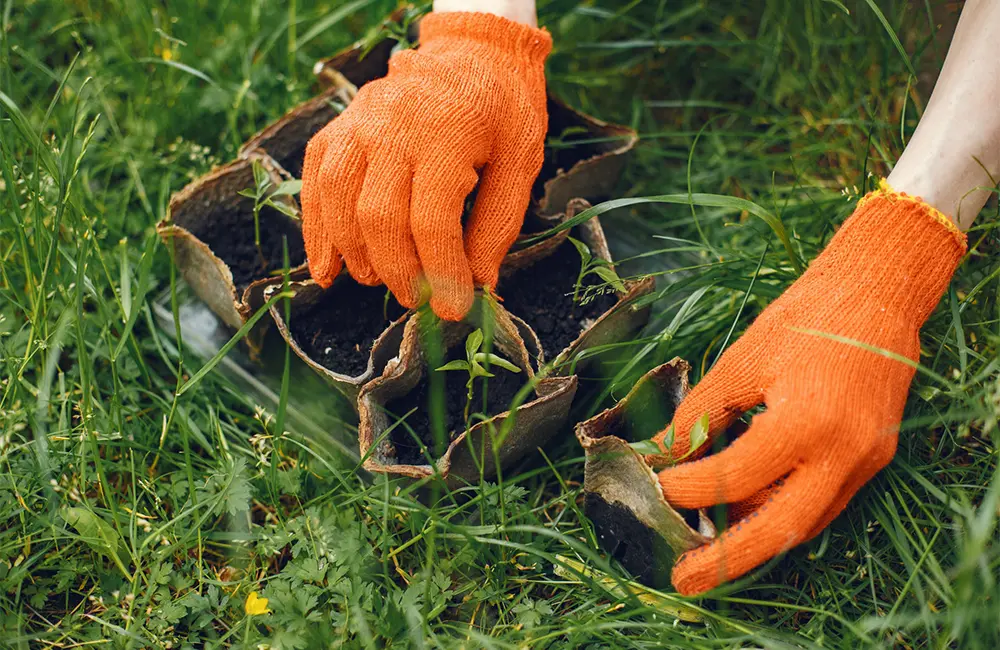Key Points:
- Winters are often harsh on plants and can damage your garden in many ways
- The only way you can keep them healthy for the spring season is by doing certain things in the winter
- It can be done in many ways, including observing and testing the soil, cleaning tools, and trimming the plants
- You should always hire an experienced company to do it.
Cold weather isn’t always kind to Connecticut. Especially for the gardens, you may see the grass with frost tips and crisps. The plants may look exhausted by the weather already. But, when you visit your friend’s garden and see that it’s at full growth even in the cold weather, you get confused about how it’s possible because yours is doing the worst in the same condition.
After that, you started to look for the solutions regarding winter landscaping, but couldn’t find a better option. At the same time, you landed upon this blog and are thinking whether it’ll answer all your questions or not. A one-word answer to this is YES, it’ll answer. Instead of waiting any longer, let’s read further so you can have a thriving garden in the spring season.
How To Do Yard Preparation for Spring Growth?
Have a Look at the Past Year’s Growth
First, you have to go through the flashbacks of last year regarding the growth of your yard. There can be many possibilities, like:
- Were there any areas specifically facing more weeds?
- Did any of the plants struggle or thrive more than usual?
You have to record these observations in written form. This way, you can have clear ideas about a lot of things. For example, if the veggies last year dealt with pest infestation, then you have to focus on planting the varieties that can fight these. This will help a lot to make your yard look better overall.
1. Preparing the Soil
Preparation of soil is very simple but needs full attention during the process. This step is divided into two methods:
- Testing the soil: Testing your soil’s health is always recommended, and here’s a way given by the University of Arkansas Agriculture Extension to make your life easier. You can try it for free.
- Using Mulch and Compost: It is good to add a thick layer of mulch and compost in your garden beds. Since it will prevent soil erosion and compaction, and helps in the release of the required nutrients. In case you wish to overwinter vegetables such as garlic or carrots, add 8 inches of mulch to let the vegetables grow better in the spring.
2. Cleaning Your Tools
Before the season arrives, you have to clean and maintain your gardening tools. Because well-maintained tools are not only easier to use but also make the whole process more efficient. Also, if you think that your tools have to be replaced, add them to your shopping list. Let’s see how the cleaning and maintenance of tools have been done:
- Removing the rust: you have to scrape the rusted areas by using a wire brush or steel wool. This will assist in loosening the rust. However, when the rust is not peeling off easily, you have to submerge the tool in a concoction of water and white vinegar. And then, having been soaked a little, rub it. Remove the rust, rinse it with water, allow it to dry all the way, and apply a coat of oil, which will prevent rust.
- Sharpening of the Tools: Start with disassembling. To sharpen, a metal file at an angle of between 20-25 degrees is used to file the beveled edge in one direction, softly. Properly wash the blades. Once this is done, then clean the blades with a cloth and add a layer of oil to prevent rust.
3. Time for Cleanup
Winter is the best time to prune trees and shrubs. You can trim the trees of maples, oaks, and fruit trees. Because this is the best time to remove damaged, diseased, or dead branches. Also, consider shaping these trees to better the structure without stressing the plant.
Tips to Keep Your Garden Healthy and Fresh
- You should always clean the garden of old, fallen tree leaves and debris. Because this may be smothered by the soil and lead to diseases or pest infestation.
- Always cover the sensitive plants with frost cloths to save them. You can also wrap the bases of young trees to protect them from wild animals.
- Deeply water your plants so they’ll stay stable during the extreme weather.
- Add lights to create a soft atmosphere in your garden.
Final Thoughts
To prepare your garden for spring, winter landscaping is the best way. You have to start it with mulching, testing the soil, and doing the proper pruning of plants and trees. It’s done to protect plants in winter. Then, you have to do the seeding of the plants in the right manner while observing the condition of the garden. You can do it only if you have enough experience.
Otherwise, it’s recommended to hire a professional company to handle this. You don’t have to keep looking for the best company when you have TG’s Landscaping here. Whenever you want your garden to look its best, contact us!
Frequently Asked Questions
1. How to ensure better winter lawn care?
To ensure a better winter lawn care, you can start by:
- Keep it clean from debris
- Mow it slow and low (with less sharp blades)
- Use a winter special fertilizer
3. What are the most common winter landscaping ideas?
There are many winter landscaping ideas to discuss:
- Addition of shrubs and trees to bring more privacy and shade
- Installation of a wall or fence around the border of the garden
- Vegetable and flower beds
- Paving of the area for dining or chilling
- Having a pond, waterfall, or similar feature




